How to Scale Account-Based Advertising Without Sacrificing Personalization
Account-based advertising has proven to be a powerful B2B strategy, with 70% of B2B companies already running dedicated ABM programs. But the real challenge comes when organizations attempt to scale these initiatives beyond a handful of target accounts. How do you maintain the personalization that makes ABM effective while expanding your reach to dozens, hundreds, or even thousands of accounts?
This is the central question many marketing leaders face as they look to scale account-based advertising without diluting its impact. With 81% of organizations reporting higher ROI from their ABM programs compared to other marketing activities, the business case for expansion is clear—but the path to successful scaling requires strategic planning and the right technological foundation.
Key Takeaways
- Implement a tiered targeting approach that segments accounts into strategic tiers based on value and conversion potential, allowing you to scale account-based advertising while maintaining appropriate personalization levels for each tier.
- Leverage AI and automation solutions to scale personalization beyond what would be manually possible, with 74% of B2B marketers citing AI-powered automation as the leading driver for improved ROI in their ABA efforts.
- Integrate intent data to identify and prioritize accounts showing active buying signals rather than casting a wider net indiscriminately, enabling more efficient resource allocation as you scale.
- Establish cross-functional alignment between marketing, sales, and customer success teams, as 68% of B2B organizations report this is the most critical factor in successfully scaling account-based advertising campaigns.
- Adopt multichannel orchestration platforms to deliver consistent, personalized experiences across advertising channels while maintaining the cohesion and personalization that makes account-based advertising effective at scale.
TABLE OF CONTENTS:
Understanding the Foundations of Scalable ABA
Before diving into scaling strategies, it’s essential to understand scaling in the context of account-based advertising. Scaling ABA is more than targeting more accounts—it’s about expanding your program’s reach while maintaining (or even improving) its effectiveness and efficiency.
True scaling requires a delicate balance between personalization and automation, between depth of engagement and breadth of coverage. The goal isn’t to dilute your approach but to systematize it in ways that allow for both growth and customization.
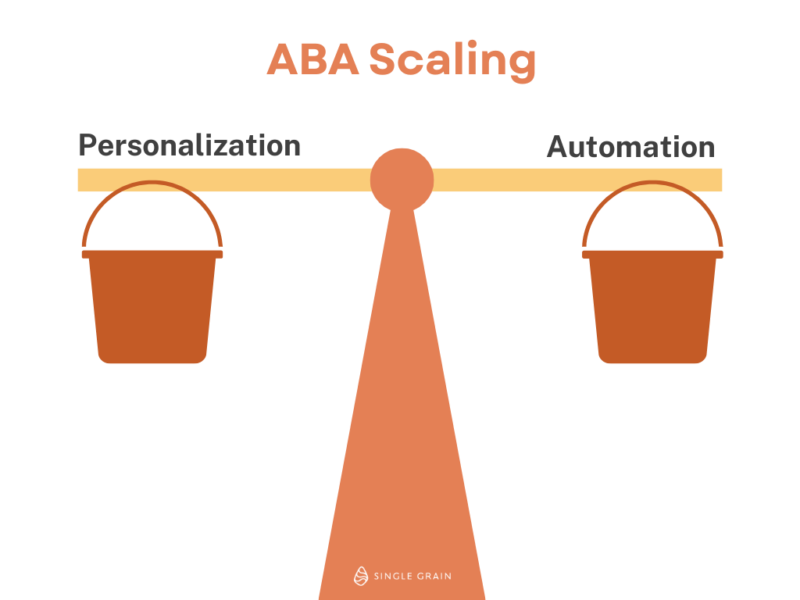
The Business Case for Scaling Account-Based Advertising
The data makes a compelling case for investment in scalable ABA strategies. According to Momentum ITSMA’s Global Account-Based Marketing Benchmark, 81% of organizations report that their ABM programs deliver higher ROI than other marketing activities. This exceptional return creates a clear imperative for expansion.
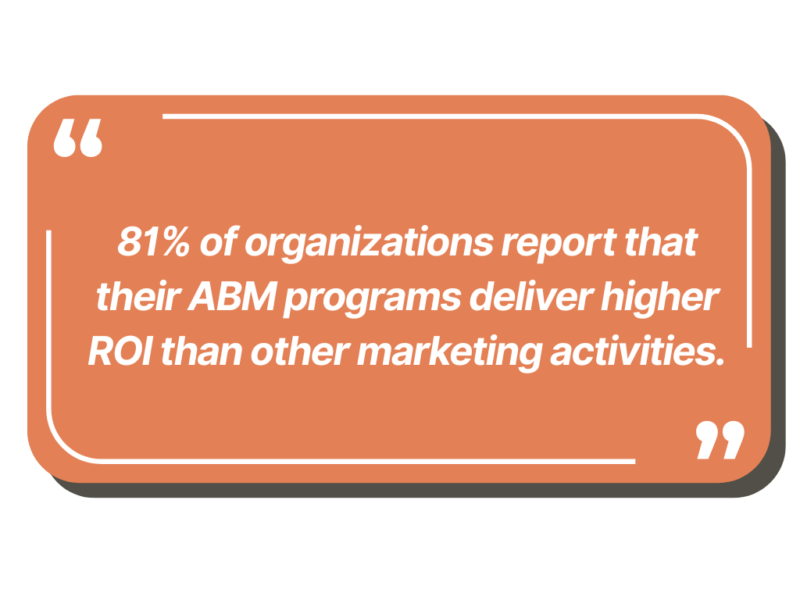
But what happens when you try to scale? Many organizations find that their highly personalized, resource-intensive approaches to a small number of accounts simply can’t transfer to a broader target list without modification. This is where strategic frameworks become essential.
Strategic Frameworks for Scaling ABA
Successful scaling of account-based advertising requires thoughtful frameworks that balance personalization with efficiency. Let’s explore the essential components that enable sustainable growth.
Predictive Analytics and Data-Driven Account Selection
The foundation of any scalable ABA program begins with sophisticated account selection. According to EXO B2B, 92% of B2B marketers integrating intent data with predictive lead scoring report improved lead prioritization and conversion rates.
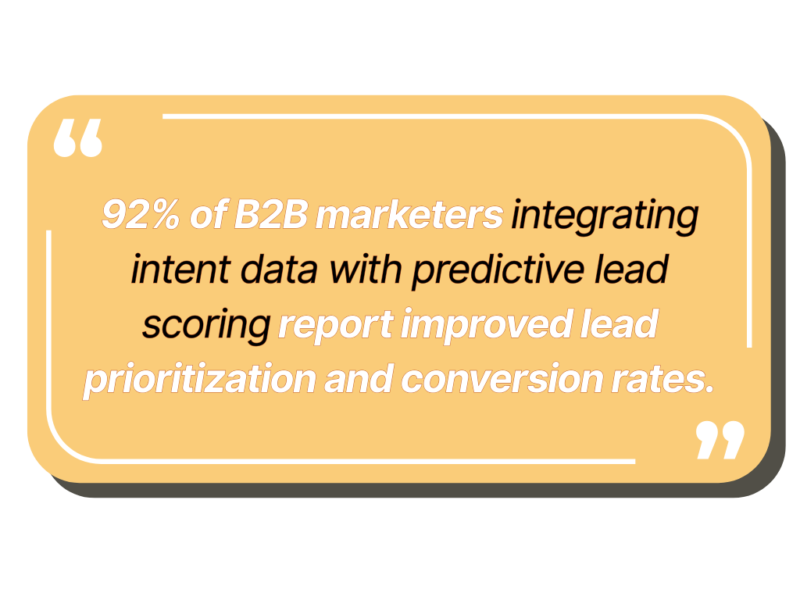
This data-driven approach allows marketers to:
- Identify accounts showing genuine buying signals rather than just matching ideal customer profiles
- Prioritize resources toward accounts with the highest probability of conversion
- Create dynamic target lists that evolve based on real-time behavioral data
- Scale beyond traditional manual selection processes that limit program size
The key is to move from static, assumption-based account selection to dynamic, behavior-based targeting that can continuously optimize as you scale.
Case Study: SundaySky
- Challenge: SundaySky needed to scale their ABM efforts by efficiently targeting high-value accounts while overcoming low conversion rates and inefficient resource allocation.
- Solution: They implemented a tiered targeting approach using SalesIntel’s predictive analytics and data enrichment to segment accounts based on firmographic and behavioral data, enabling personalized outreach aligned to each account’s conversion potential.
- Results: Achieved a 220% increase in conversion rates along with higher engagement and accelerated pipeline velocity.
- Key Takeaway: Leveraging predictive analytics and tiered targeting can significantly boost conversion rates in ABM.
Tiered Targeting Approaches
One of the most effective frameworks for scaling ABA is a tiered approach that segments accounts based on their strategic value and likelihood to convert. This allows you to allocate resources proportionally while maintaining appropriate levels of personalization.
| Tier | Account Volume | Personalization Level | Resource Allocation |
|---|---|---|---|
| Tier 1 (Strategic) | 10-50 accounts | Fully customized (1:1) | 40-50% of budget |
| Tier 2 (Target) | 50-500 accounts | Segment-based (1:Few) | 30-40% of budget |
| Tier 3 (Scale) | 500+ accounts | Industry/role-based (1:Many) | 10-30% of budget |
This framework enables organizations to scale their reach dramatically while still providing meaningful personalization where it matters most. The tiered approach acknowledges that not all accounts require the same level of customization—and that’s what makes scaling possible.
Cross-Functional Alignment: The Foundation of Scale
Perhaps surprisingly, the ability to scale account-based advertising often hinges on organizational alignment more than technological capabilities. According to SellersCommerce, 68% of B2B organizations reported that cross-functional alignment between marketing, sales, and customer success teams was the most critical factor in successfully scaling ABA campaigns in 2025.
Effective cross-functional alignment requires:
- Shared metrics and KPIs that focus on account engagement rather than traditional marketing metrics
- Regular coordination meetings to review account progress and adjust strategies
- Transparent access to advertising performance data for sales and customer success teams
- Joint planning and execution of major campaigns
- Clear definitions of roles and responsibilities throughout the account journey
Without this alignment, scaling efforts often falter as teams work at cross-purposes or fail to capitalize on insights across departments.
Technology Enablers for Scaling ABA
The right technology stack is essential for scaling account-based advertising effectively. Here are the key components that facilitate growth while maintaining quality.
AI and Automation Solutions
According to Cognism, 74% of B2B marketers cited AI-powered automation as the leading driver for improved ROI in their digital advertising and ABA efforts in 2025. This demonstrates the critical role that artificial intelligence plays in scaling operations.
AI solutions enable marketers to:
- Generate personalized ad copy variations at scale
- Automatically adjust bidding strategies based on account engagement
- Recommend optimal channel mix for different account segments
- Predict which accounts are most likely to convert next
- Scale personalization beyond what would be manually possible
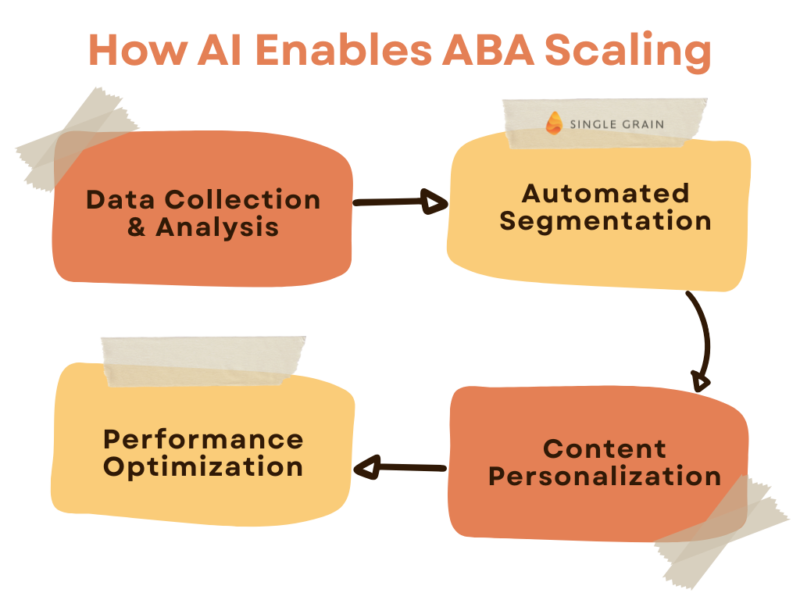
Intent Data Integration
The integration of intent data has become a cornerstone of scalable ABA. By incorporating signals that indicate buying intent, marketers can prioritize accounts that are actively in-market and tailor messaging to their specific needs.
Intent data comes in several forms:
- First-party data from your website, email interactions, and CRM
- Third-party data from content consumption across the web
- Technographic data showing technology stack changes
- Engagement data from advertising platforms
- Partner ecosystem insights
When combined with your account targeting strategy, intent data allows you to scale intelligently—focusing resources on accounts showing active interest rather than casting a wider net indiscriminately.
Multichannel Orchestration Platforms
As account-based advertising scales, coordinating messaging across channels becomes increasingly complex. Multichannel orchestration platforms enable marketers to deliver consistent, personalized experiences across advertising, email, website, social media, and direct mail.
These platforms typically provide:
- Centralized campaign management across channels
- Audience synchronization to maintain targeting consistency
- Cross-channel attribution and reporting
- Automated workflows based on account behaviors
- Personalization capabilities that work across touchpoints
For organizations looking to implement successful LinkedIn ABM campaigns as part of a broader strategy, these platforms can ensure cohesion with other channels while maintaining the personalization that makes ABM effective.
Case Study: Foundry
- Challenge: Foundry’s clients were hindered by siloed marketing channels and fragmented data, which limited effective engagement and conversion from high-value target accounts.
- Solution: They implemented multichannel ABM orchestration using predictive AI to unify campaign execution across email, web, and digital ads, ensuring coordinated, real-time, data-driven engagement.
- Results: Delivered 2X higher email response rates, 3X increase in web traffic from high-intent accounts, and a 20% higher rate of form fills.
- Key Takeaway: Coordinating personalized engagement across multiple channels with AI can multiply engagement metrics in ABM campaigns.
Overcoming Common Scaling Challenges
As organizations expand their account-based advertising efforts, they inevitably encounter obstacles. Here’s how to address the most common challenges:
Maintaining Personalization at Scale
The tension between personalization and scale represents perhaps the greatest challenge in expanding ABA programs. The solution lies in modular content approaches that combine standardized frameworks with customizable elements.
Effective strategies include:
- Creating industry-specific content templates that can be customized for individual accounts
- Developing personalization tiers that correspond to account value
- Using dynamic content insertion based on account attributes
- Building segment-specific creative libraries that address common pain points
- Leveraging personalization platforms to scale your LinkedIn ABM ads and other channel-specific content
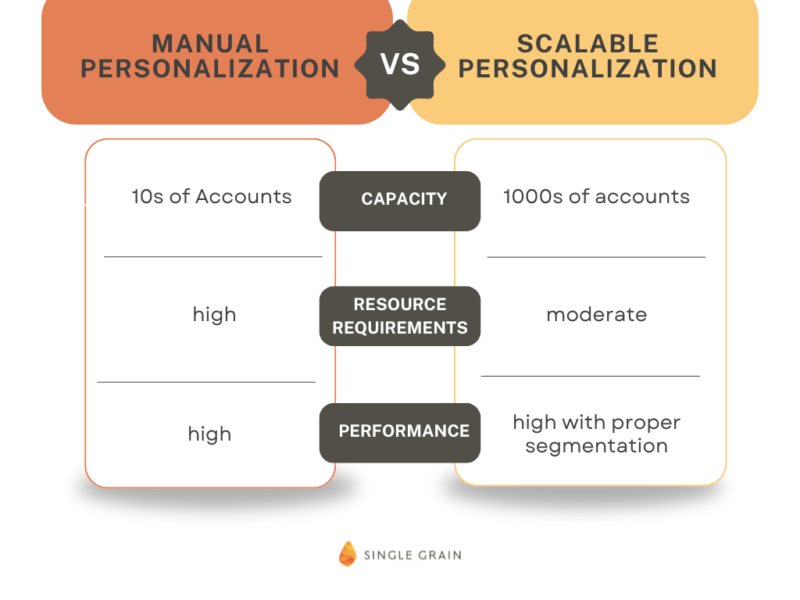
Resource Allocation and ROI Optimization
Scaling requires careful consideration of where to allocate limited resources for maximum impact. This becomes increasingly important as programs expand to include more accounts with varying potential value.
Best practices include:
- Implementing ROI-based budgeting across account tiers
- Establishing clear performance thresholds for continued investment
- Creating agile resource allocation models that respond to engagement signals
- Building measurement frameworks that capture full-funnel impact
- Regularly reviewing and adjusting allocations based on performance data
Measuring Success Across Expanded Audiences
As your account list grows, measurement complexity increases exponentially. Traditional metrics may no longer capture the nuanced impact of your expanded efforts.
Consider adopting these measurement approaches:
- Account engagement scoring that aggregates interactions across channels
- Velocity metrics that track progression through buying stages
- Influence analysis that identifies advertising touchpoints in complex sales
- Comparative metrics that evaluate performance across account tiers
- ROI calculations that incorporate deal size and customer lifetime value
For companies implementing LinkedIn account-based marketing for maximum reach, these measurement frameworks are particularly important to assess effectiveness across expanded audiences.
Future Trends in Scalable Account-Based Advertising
As the ABA landscape evolves, several emerging trends are shaping the future of scalable programs:
- Predictive intent modeling that incorporates macroeconomic signals and company-specific events to forecast buying readiness with greater accuracy
- Privacy-first targeting approaches that maintain precision while adapting to a cookieless future and increasing data privacy regulations
- Generative AI content creation that produces highly personalized messaging at unprecedented scale, enabling true 1:1 communication with hundreds or thousands of accounts
- Interactive advertising formats that provide immersive, customized experiences directly within ad units, increasing engagement while maintaining efficiency
- Integrated measurement ecosystems that connect advertising performance to revenue outcomes across complex B2B buying journeys
Organizations looking to stay ahead should also explore programmatic advertising fundamentals as these approaches increasingly intersect with account-based strategies in sophisticated buying environments.
Balancing Scale and Impact
Successfully scaling account-based advertising isn’t about choosing between personalization and reach—it’s about strategically balancing both to achieve maximum impact with available resources. By implementing tiered targeting approaches, leveraging AI-powered automation, integrating intent data, and fostering cross-functional alignment, B2B marketers can expand their ABA programs while maintaining the personalization that makes them effective.
The most successful scaling efforts leverage technology to enhance human capabilities rather than replace them. They maintain a relentless focus on the ultimate goal: creating meaningful connections with high-value accounts that drive revenue growth.
As you embark on your journey to scale account-based advertising, remember that the most important metric isn’t the number of targeted accounts, but the quality of engagement achieved with each one. With the right strategy and tools, you can expand your reach without sacrificing the personalized touch that makes ABM so powerful in the first place.
Ready to take your account-based advertising to the next level? Start by assessing your current approach, identifying the framework that best fits your organization, and personalize & scale your LinkedIn ABM ads to drive better results from your most valuable accounts.




